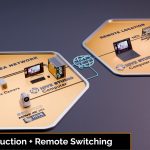History of Remote Production – (Chapter 2)
Get in Touch
-
To More Inquiry
(833) 888-9706
-
To More Inquiry
[email protected]
-
534 Trestle Pl, Downingtown, PA, USA
- Home
- Role of IP Video – (Chapter 3)
Role of IP Video – (Chapter 3)
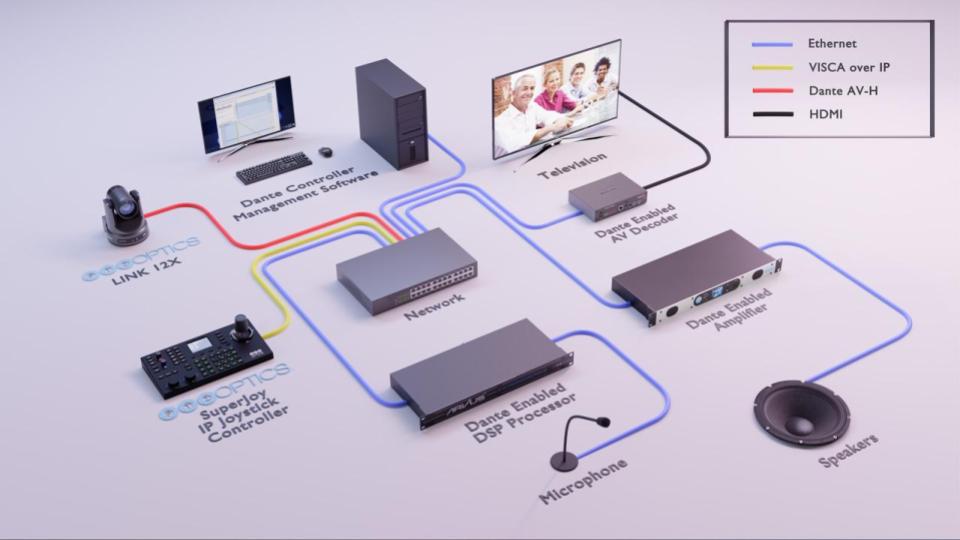
By, Paul Richards
- 7 Jul, 2024
- 339 Views
- 0 Comment
Networking technologies such as IP (Internet Protocol) have made it feasible to send multiple streams of data simultaneously and bi-directionally. This capability is fundamental to remote production and it has been super-charged by NDI, Dante Video, SMPTE 2110 and other IP video standards which take advantage of this bi-directional connection using meta-data for equipment control, monitoring and status updates.
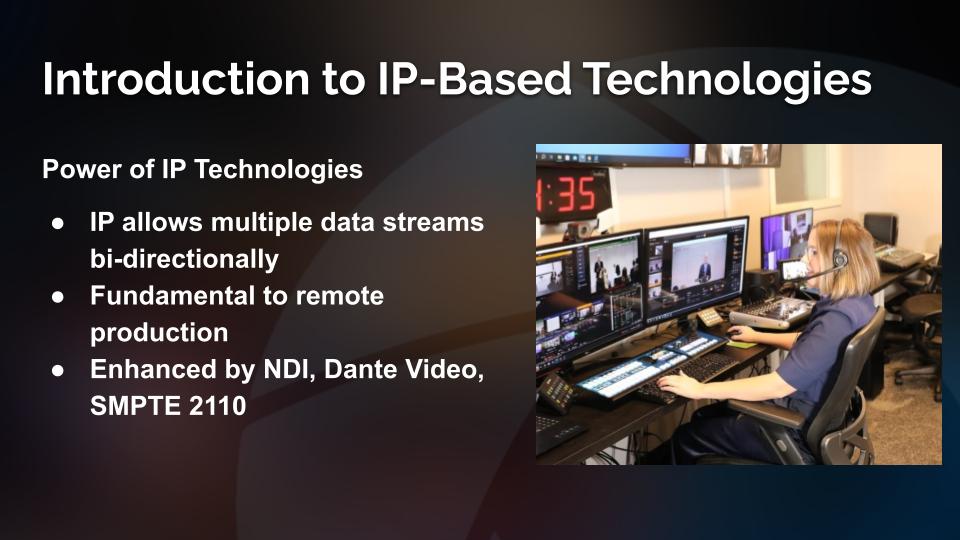
NDI Overview:
Developed by NewTek and now owned by Vizrt, NDI is a video standard that allows software and hardware to communicate and deliver broadcast-quality video via a standard network. NDI will be reviewed extensively throughout this book as it’s truly become an industry standard. It’s also a great way to learn IP video with software tools you can download and try at any time on their website https://ndi.video. NDI is an accessible option for a wide range of scenarios, from small-scale productions to educational and corporate live events. It’s particularly suited for settings where you want to transmit video over a standard ethernet network (and who doesn’t want to do that? :).
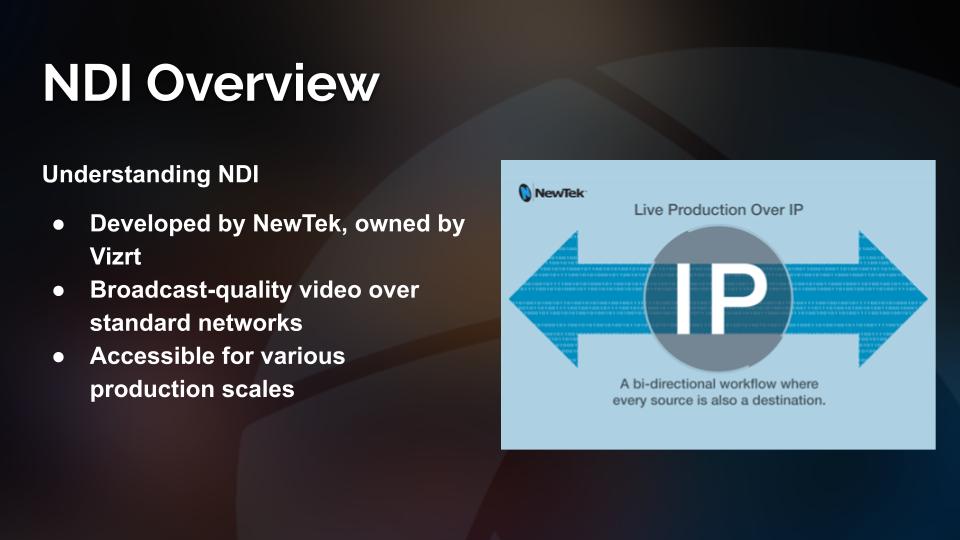
SMPTE 2110 Overview:
Contrasting with NDI, SMPTE 2110 is a professional-grade standard that supports uncompressed video and requires a high-bandwidth network infrastructure like 10Gb ethernet or fiber. The advanced capabilities of SMPTE 2110, however, require specialized hardware, complex network setups, and significant technical knowledge, making it less accessible for smaller organizations or those without substantial IT support.
You can learn more about SMPTE 2110 in Chapter 10, Advanced Topics in Remote Production.
Dante AV Overview:
Dante, traditionally renowned for revolutionizing audio networking, has expanded its capabilities to include video through its Dante AV ecosystem. Dante supports interoperability among different manufacturers using the same video codec, seamlessly integrating with the thousands of existing Dante-enabled audio and video products. The introduction of video capabilities allows for independent routing of audio, video, and ancillary channels, providing exceptional control and flexibility in signal routing.
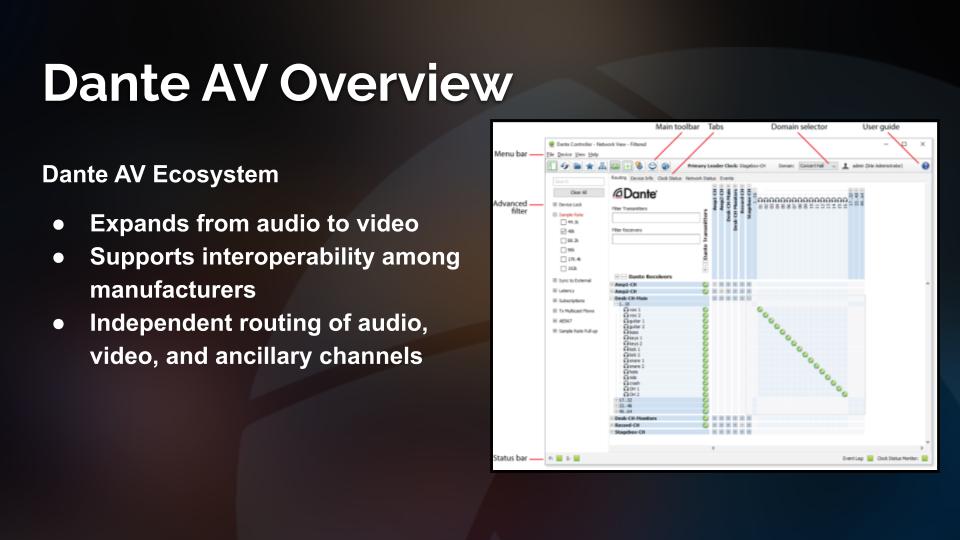
The Dante Certification Program is recognized as a standard for AV networking professionals, providing a clear path for learning about Dante technology and showcasing proficiency to employers and clients. The program includes multiple certification levels and various electives, each offering a comprehensive education on different aspects of Dante.
Dante Certification Level 1:
- Covers basic digital audio and video, networking fundamentals, and setup of a basic Dante network using Dante Controller.
- Suitable for operating a Dante system in daisy chain mode or on a single network switch.
Dante Certification Level 2:
- Focuses on creating larger networks, managing bandwidth, basic optimization, and using external clocks.
- Ideal for systems involving multiple network switches.
Dante Certification Level 3:
- Develops skills for navigating Layer 3 enterprise networks, explains Layer 3 benefits, and demonstrates Dante Domain Manager.
- Useful for building large Dante networks and collaborating with IT staff in large organizations.
Dante Domain Manager Administrator Certification:
- Comprehensive training for deploying and configuring Dante Domain Manager, covering logical segmentation, advanced clocking configurations, user management, and detailed logging.
- Essential for managing large and complex Dante networks.
Dante AV Elective Course:
- An hour-long, on-demand session explaining key concepts of the Dante video platform, “Dante AV.”
- Illustrates deployment of Dante video alongside audio and details various Dante AV products like Dante AV Ultra, Dante AV-H, and Dante Studio.
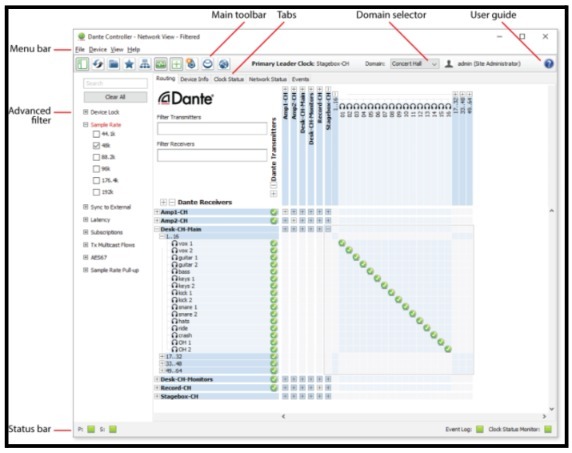
Dante Controller is the primary software tool for routing and configuring Dante audio and video sources. You can learn more about Dante AV in Chapter 10, Advanced Topics in Remote Production.
Cloud Computing and Software Advancements
The development of cloud computing has further transformed remote production by decentralizing the processing and storage of data. Cloud-based platforms powered by Amazon Web Services (AWS), Google and Microsoft Azure among others, enable production teams to access and route video feeds from any location with an internet connection, providing unprecedented flexibility and scalability. With the computer processing handled in the cloud, simple laptops can be used to perform complicated video production tasks.
While tinkering with these cloud services may seem daunting, there are a slew of services that provide cloud hosting specifically for video production such as V2Cloud. Services like this allow you to quickly build a custom cloud system designed for Open Broadcaster Software (OBS) for example, in just four easy steps. You choose a plan, build a cloud PC, install OBS and get started with your cloud based video production.
Innovations In Remote Production
The technology that we use for live streaming is only getting better with the introduction of 5G technology, AI, and computer vision. 5G specifically is allowing for high quality broadcasts from smartphones giving remote reporting a whole new meaning. Cellular-bonding for example is a technology which can use multiple 4G and 5G cellular signals to make one stronger reliable connection. This allows for high quality streaming to take place in more and more remote locations. Computer vision is another exciting technology powering the auto-tracking of subjects with PTZ cameras; helping to simplify camera operations for video production teams. With auto-tracking enabled PTZ cameras, a single camera operator can operate multiple PTZ cameras, including other tasks such as video switching and keeping an eye on automated multi-camera framing, eliminating the need for manually following subjects with a joystick controller.

KEY TAKEAWAYS FROM THIS CHAPTER:
- IP-Based Technologies for Remote Production:
- IP technologies like NDI and SMPTE 2110 have revolutionized remote production by enabling high-quality video transmission over standard networks.
- NDI is accessible and ideal for smaller scale or entry-level productions due to its ease of use and low bandwidth requirements.
- SMPTE 2110 caters to high-end production needs with capabilities for uncompressed video, requiring more robust network infrastructure and technical expertise.
- Comparative Overview of NDI and SMPTE 2110:
- NDI offers flexibility and ease of use, making it suitable for less complex, cost-sensitive environments.
- SMPTE 2110 provides superior video quality and precise synchronization, suited for professional broadcasting environments that demand the highest production standards.
- Dante Video Integration:
- Dante has extended its capabilities from audio to video, facilitating seamless interoperability across different devices and enhancing networked video production’s flexibility.
- Impact of Cloud Computing:
- Cloud computing technologies have greatly enhanced remote production by decentralizing data processing and storage, allowing for more scalable and flexible production workflows.
- Services like V2Cloud cater specifically to remote video production, simplifying the transition to cloud-based workflows.
- Emerging Technologies and Trends:
- Advancements in 5G, AI, and computer vision are pushing the boundaries of what’s possible in remote production, enabling higher quality streams from remote locations and more dynamic production techniques such as auto-tracking cameras.
- Application of Dante and Cloud Technologies:
- Dante’s expansion into video enhances system compatibility and control, while cloud services facilitate remote access and control over production, crucial for adapting to fast-changing production demands.
Core IP Video Priciples (Chapter 4)
Recent Comments
Category
- Audio (1)
- AV Management (2)
- Book (18)
- Education (1)
- NAB Show (1)
- NDI (4)
- PTZ Controls (4)
- Remote Production Software (18)
- Sports (1)
- Studio Management (2)
- Training (7)
- Uncategorized (4)
- vMix (3)
New Tags
auto-tracking AV Management AV Monitoring bandwidth Book broadcasting broadcast technology camera compatibility camera presets camera settings cloud-based platform CloudFlex color correction Education Epiphan Hive Hive PTZ Hive Setup innovative technology IP Video live production live streaming metro NAB Show NAB Show 2024 NDI NDI Video Source Peplink professional broadcasting professional video PTZ camera control PTZ Controls PTZOptics PTZOptics Hive real-time collaboration remote production remote video production Sports Sports Broadcasting USB Cameras video broadcasting video content production video equipment video production vmix


